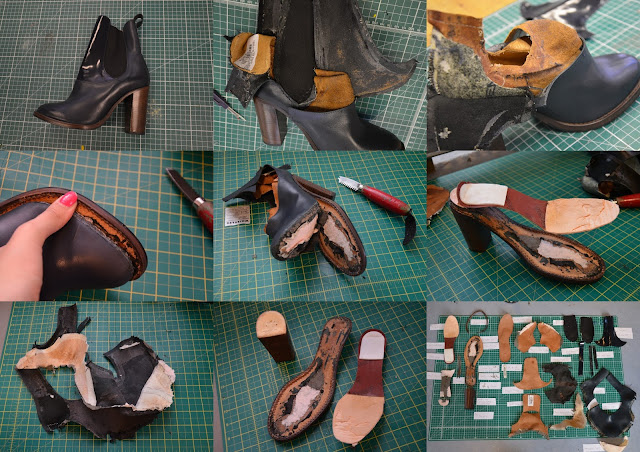I am free,
my school has ended, and I should be having a time of my life right? Instead I
am finding myself wandering around slightly clueless and equally stressed as
before the holidays started. From all the stress and adrenaline in the past 2
months, especially last 2 weeks of school, my everything is still in the work
mood. I need to do something, anything. The problem arises when I also want to
relax and don’t really feel like working. Not allowing myself to do either
properly, work or relax has led me to just existing and feeling bad for ‘procrastinating’.
My second
term project has been on my mind since the briefing we had two weeks ago, I
want to learn from experience and start proper work from day one. Because I am
visiting my home in Slovenia in second half of the holidays, that step ahead in
studying and preparation for next year has to be done now, in these two weeks.
I've been finding it increasingly hard to concentrate on that and all attempts left
me feeling really frustrated with myself.
I am pretty
sure that 2 h ago, a mental click has finally happened (I love these, but they
are impossible to predict). I've decided to stop worrying for an hour and eat
my diner while watching Ballet 422, a documentary about the production of a
ballet show, choreographed by an amazingly talented, 25 years at the time,
Justin Peck. I was initially interested in watching ballet documentary because
of my accidental extended research into a ballet shoe. If you think about it,
it is an essential part of a ballerina’s wardrobe, it is a shoe but its construction
is not even close to any other dancing shoe or even any shoe in existence. (* will include a chapter from my written
piece on history of footwear below ^^)
Anyway,
documentaries like these really bring me motivation and encourage me to work
harder. I find this particular one particularly inspiring not because of how it
was shot, or because of the theme (which is amazing by the way, watching
dancers move… any kind of dance, from ballet to hip-hop is just mesmerising),
but because it shows how much work and effort was put into a project. Collaborating,
exchanging ideas, cross disciplinary conversations and hard work all combined
to create a beautiful finished product.
I know now
what my goal is during the holidays; to work as hard as I can on improving myself.
Because it is the holidays, I will let my heart choose. I won’t try to force
myself to work on the 2nd term project, instead I will work hard on
other things like research the history and modern culture of platform shoes, or
visit a bunch of weird museums around London, or taste a bizarre sweet salty
milkshake in Shoreditch, or go window-shopping, or just enjoy the amazing city
of London.
*The promised short history of a ballet shoe.
A modern ballet shoe – pointe
Ballet was first founded
in the 17th century on the French court of Louis the XIV. The dance
was originally performed in high heeled slippers which were very restrictive in
terms of movement, especially jumps.
One cannot be certain
about when the heels were removed from ballet dancing shoes, but it is
generally believed that the first dancer to ever wear shoes with no heels was a
French ballerina from The Paris Opera Ballet, Marie Camargo in the 18th
century. The flat flexible slipper, attached to the leg with ribbons and
pleated around the toes for a better fit, much as the modern pointe shoe,
spread through the ballet community very quickly as it allowed the dancers much
more freedom in their movement.
The second breakthrough in
dancing on tip toes was Charles Didelot’s ‘Flying machine’ in the 1795. Dancers
would be lifted on wires and allowed to dance on their tip toes before being
lifted from the ground completely. The public responded to the change in a very
positive way, causing dance directors to include more ‘en pointe’ routines in
their choreographies.
As the dance progresses,
the desire and need for technical skill increased. The first person to dance
through the entire show on her tiptoes in slightly modified satin slippers was
Marie Taglioni. Soles were made out of leather with darned toe area and sides
to help them keep their shape. As the shoes of this period offered no
additional support, the dancers had to rely on their strength to stay upright
on their toes.
The birth of the modern
ballet shoe however is attributed to the early 20th century Russian
ballerina, Anna Pavlova. To compensate for her high arched insteps and prevent
injuries she reinforced the leather soles and hardened the toe area to create a
box.
With a few modifications,
the shoe has remained practically the same for the past 200 years.
There are exceptions to
that rule, as the innovation is still taking place today, most notably by
Nike’s collaboration with Bloch dancewear and Guercy Eugene that resulted in
the Nike Arc Angle ballet shoe (picture
bellow).
Culturally and thematically diverse adaptations of the classic
ballerina pointe shoe are seen in popular culture as seen in ‘Ballerina Ultima’
shoes by Christian Louboutin, 2007
(picture on the left) and ‘Lady Pointe’ shoes by Notitaka Tatehana, 2012
(picture on the right).































